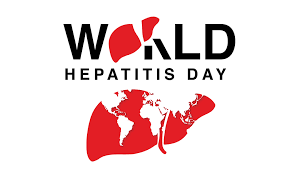Jumoke Olasunkanmi
The Naira’s relentless descent has been a cause for concern since June 2023, with the currency hitting an all-time low of 1,260 per dollar as of Friday, January 12.
This downward trajectory has positioned the Naira as the worst-performing currency among 151 currencies tracked by Bloomberg, trailing only the Lebanese pound and the Argentine peso in terms of global depreciation.
The implications of this decline extend far beyond the foreign exchange market, impacting the lives of ordinary Nigerians, the strategies of investors, and the operations of businesses.
The policy shift by the Central Bank of Nigeria (CBN) in June, which allowed the market to determine daily exchange rates, has been a significant driver of the Naira’s freefall. This departure from the previous fixed foreign exchange policy, where the currency was pegged at around 460 Naira to a dollar, led to a surge, with the Naira’s official rate surpassing 770 per dollar by mid-July.
The recent market analysis by Bloomberg predicts a sustained decline that could mark the Naira’s poorest performance since 1999, further exacerbating the situation.
The impact of the Naira’s decline is felt acutely by the common people of Nigeria. As the value of the local currency diminishes, the cost of imported goods and services rises significantly, leading to higher prices for essential commodities and fueling inflation. This places strain on the purchasing power of ordinary individuals, exacerbating financial hardships and impacting the quality of life for many who are already grappling with economic challenges.
Investors, both domestic and foreign, are confronted with heightened uncertainty and risk due to the devaluation of the Naira.
The erosion of returns on investments denominated in the local currency for foreign investors may prompt a reevaluation of investment strategies and potentially lead to a reduction in foreign direct investment. For local investors, the volatility in currency value introduces an additional layer of risk, affecting investment decisions and portfolio performance.
The private sector bears the brunt of the currency’s decline in several ways. Import-dependent industries witness increased production costs due to higher prices for imported raw materials and machinery, forcing businesses to pass on the burden to consumers through price hikes.
Small and medium-sized enterprises (SMEs) find it challenging to absorb these rising costs, and access to credit may tighten as lenders become more cautious in response to economic uncertainties, stifling the growth prospects of businesses across various sectors.
Multinational corporations operating in Nigeria grapple with the translation of profits and repatriation of funds in the face of a weakening local currency.
Risk management strategies become pivotal for businesses to navigate exchange rate volatility effectively, and business planning becomes more intricate as the uncertain economic landscape necessitates a careful assessment of the potential impact on revenue streams and operational costs.
In the face of these challenges, some analysts express optimism for the Naira’s recovery. Razia Khan, Managing Director and Chief Economist for Africa and the Middle East at Standard Chartered Bank anticipates a boost in FX reserves through donor support and external borrowing.
Similarly, Charlie Robertson, Head of Macro Strategy at FIM Partners UK Ltd, suggests that prudent financial management, including keeping money printing in check, could contribute to stabilizing the Naira.
In essence, the Naira’s significant decline permeates every facet of society, from the daily lives of citizens grappling with inflation to the strategic decision-making of investors and businesses navigating a turbulent economic terrain.
As Nigeria grapples with the implications of the Naira’s continued decline, collaborative efforts between the private sector and policymakers become crucial to devise solutions that foster resilience and sustainable growth in this challenging economic environment.



